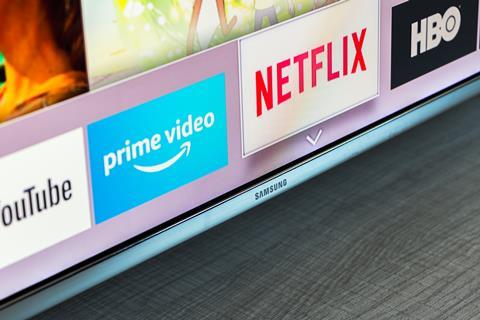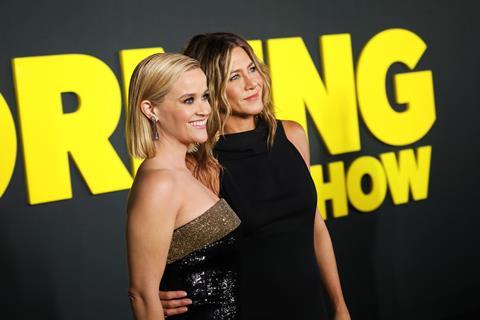In part one of a two-part series, Alana Foster looks at the OTT marketplace. With growing competition among services, will success be driven by content or technology?

The seesaw of announcements and launches between new players launching into the streaming industry has been met with varying degrees of criticism and celebration.
A new era of entertainment is among us and its set to get even more complicated with the global titans of media, entertainment and technology betting billions of dollars on content and technology for consumers to opt in to by paying a monthly fee for streaming access to premium film and TV.
The launch of NBCUniversal’s Peacock and Warner Media’s HBO Max this spring joins AppleTV+, Disney+ and the old faithfuls of Netflix, Amazon and Hulu; not to mention niche offerings including Quibi, Twitch, BritBox and DAZN, bringing greater streaming options to audiences than ever before.
Apple TV+ has already picked up its first round of awards, while Disney+ debuted in the US and Canada with technical glitches. The question of what is key to launching an appealing, easy to use and competitive offering adds to the complicated web of options.
Each of the competing streaming services has noteworthy titles, either originals or legacy content pulled from the media co’s archives and third parties in a bid to draw eyeballs across to the new platforms.
Apple TV+ is the only destination for consumers to view Jennifer Aniston’s The Morning Show, for which she bagged the Screen Actor’s Guild award for best female actor in a drama series. If you’re a Star Wars fan you’d need to subscribe to Disney+ to access its new series The Mandalorian, while the family favourite hit series Friends will be exclusively available on HBO Max.

HBO pulled the popular sitcom from Netflix in favour of moving fans to its new service, while Netflix will also lose The Office at some point in 2021 when NBCUniversal’s moves it to its OTT Peacock.
The great streaming battle
For content creators this couldn’t be a better time. In the history of entertainment, never has there been so much premium content produced for such a range of services.
Speaking to IBC365, Ampere Analysis analyst Tingting Li says: “As many studio groups launch their own direct-to-consumer (D2C) services, existing players start to lose content and therefore it is crucial for them to seek new content providers and establish new IP.”
Netflix has led the way in terms of original SVoD production with Ampere data showing it released 305 new movies and TV shows last year, while Amazon and Hulu were notably behind with 40 and 20 respectively.
Netflix is set to have more competition moving forward and even though it is still in the lead with 275 TV shows in production, Amazon has ramped up production with 146 upcoming shows, and new services HBO Max and Disney+ have 82 and 53 shows in the pipeline respectively.
Read more HBO Max: Too late to the streaming party?
The audience for premium TV and movies is expanding exponentially, beyond the size of the traditional pay-TV base, and with so much content circulating the user experience (UX) is undoubtedly critical for engagement.
Ovum principal analyst OTT video Tony Gunnarsson explains how the SVoD market is a key driver for the technology vendor market.
“As SVoD matures into multi-million subscriber businesses, they will require greater technology tools, from content library inventory to customer relationship and churn management tools.
“And of course, the requirements of SVoD is quite different to traditional TV, in that services have to be work across multiple devices from TV to mobiles as well as across different networks, while at the same time providing a seamless user experience.”
Tech talk
Looking beyond the legacy Disney library, HBO, Peacock and Netflix all respectively offer a variety of content across the genres.
However, Disney’s offering includes higher quality 4K high dynamic range (HDR) streams, which is a step up in picture quality from high definition (HD), in its subscription price and is also available across a host of devices and platforms.
Apple also includes 4K HDR on some non-Apple devices but limits its premium features such as Dolby’s Atmos sound and Vision picture to Apple products exclusively.
Netflix has 4K HDR, but you need its Premium tier and priciest subscription at $15.99 per month to access this version of content.
Read more Blog: Overcrowding in the OTT landscape
The specifics of HBO Max are not yet confirmed. However, according to a report by Cnet and a statement provided by a WarnerMedia spokesperson, HBO Max will allow for mobile downloads and multiple streams with 4K HDR at launch.
The impact for technology providers, Li explains, is positive: “Technology providers have the ability to bundle up the SVoD platform with their existing products and thus have different success criteria to existing players, and therefore different economics around how much they can invest in content.”
The next-generation wave of new streamers are specifically designed for mass market audiences.
Gunnarsson says: “The next few years will be a time of frantic competition for subscribers, with a great deal of aggressive marketing of services, a full-blown price war, a generally tougher times ahead for smaller national services that will find it impossible to compete not only with Netflix and Amazon but multiple US major service newcomers.”
OTT sea change
There is no denying the opportunities across the industry, for content creators to technology vendors, is unprecedented, however, the flip in business models and investment on expensive technology and UX offers a high risk and reward.
Futuresource associate director consumer media and technology Carl Hibbert adds: “The plethora of services also means that consumers will at some point say, ‘too many’ and churn out.”
As such, management of services across the board will become a hot topic with the increased service availability and the likelihood of more service stacking, customers loyalty will be the primary driver in decision making, once the content and technology has plateaued.
“How these new services fit in with the wider viewing mix eg: free traditional tv, pay tv, transactional video and newer AVoD services such as Pluto TV will be interesting, to see how consumers split their time,” Hibbert explains.
“All the new services have their different strengths and will be appealing to many; key will be keeping subscribers locked in beyond the initial few months. Super aggregation will also become increasingly important across the longer term, which platform can offer a seamless pan service experience.”
It’s unlikely that mass impact will be immediate but it’s certain that 2020 will be a milestone year for the streaming landscape.
The consolidation among existing and new services or joint ventures wouldn’t come as a surprise similar to ITV and BBC’s BritBox in the UK and France’s Salto, the move to compete with the US giants makes sense.
According to Ovum, from 2020 onward, a new era of OTT video will emerge, and as more high-profile companies prioritise OTT video delivery over other areas of their business, OTT video will become the main attraction.
As to whether new streamers can stand up and compete its clear the content race is underway and the technology focus is pivotal for all services.
In part two of the series, UX, consolidation and future prediction of the OTT landscape will be investigated.
Read more 2020: The year of the OTT
























2 Readers' comments